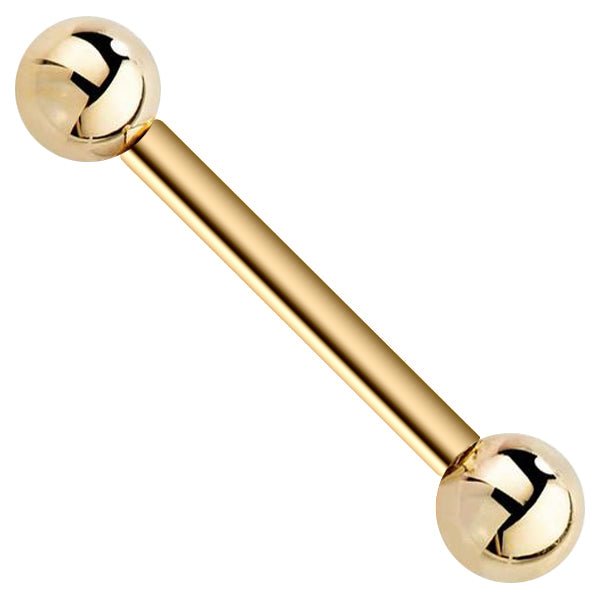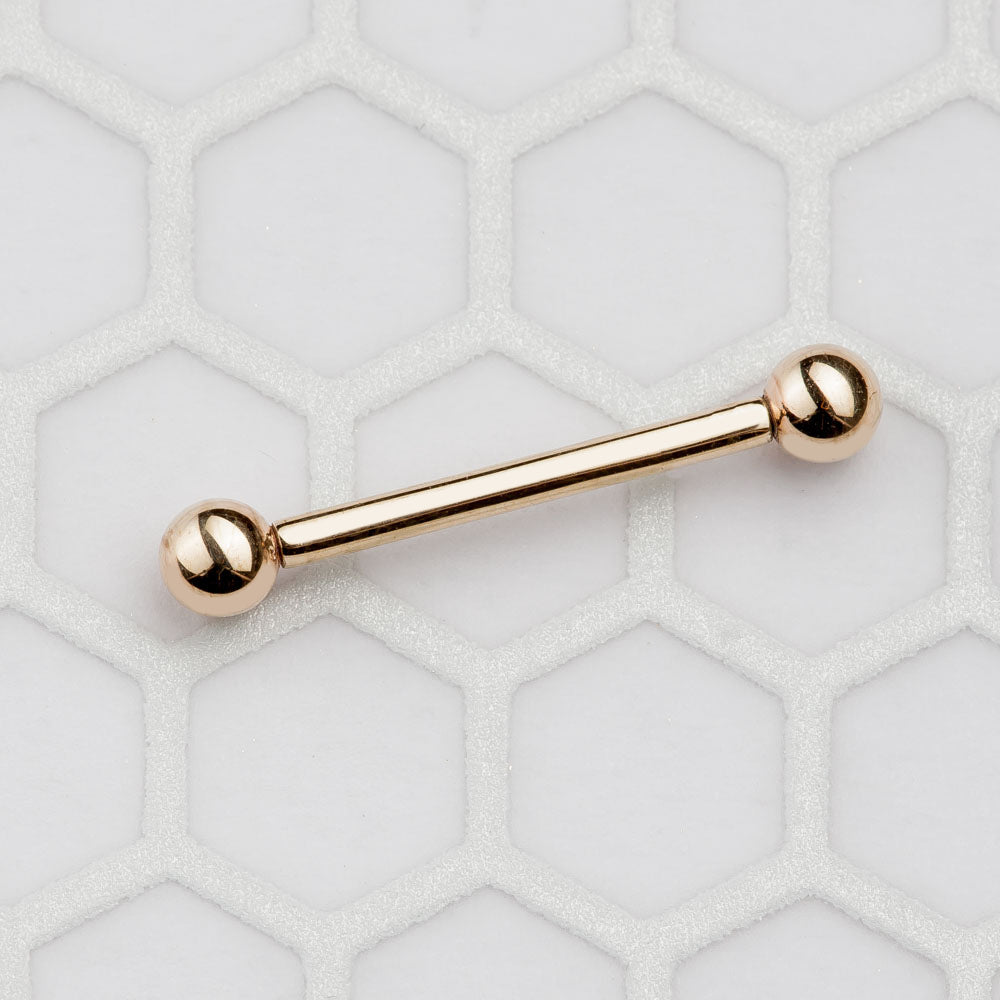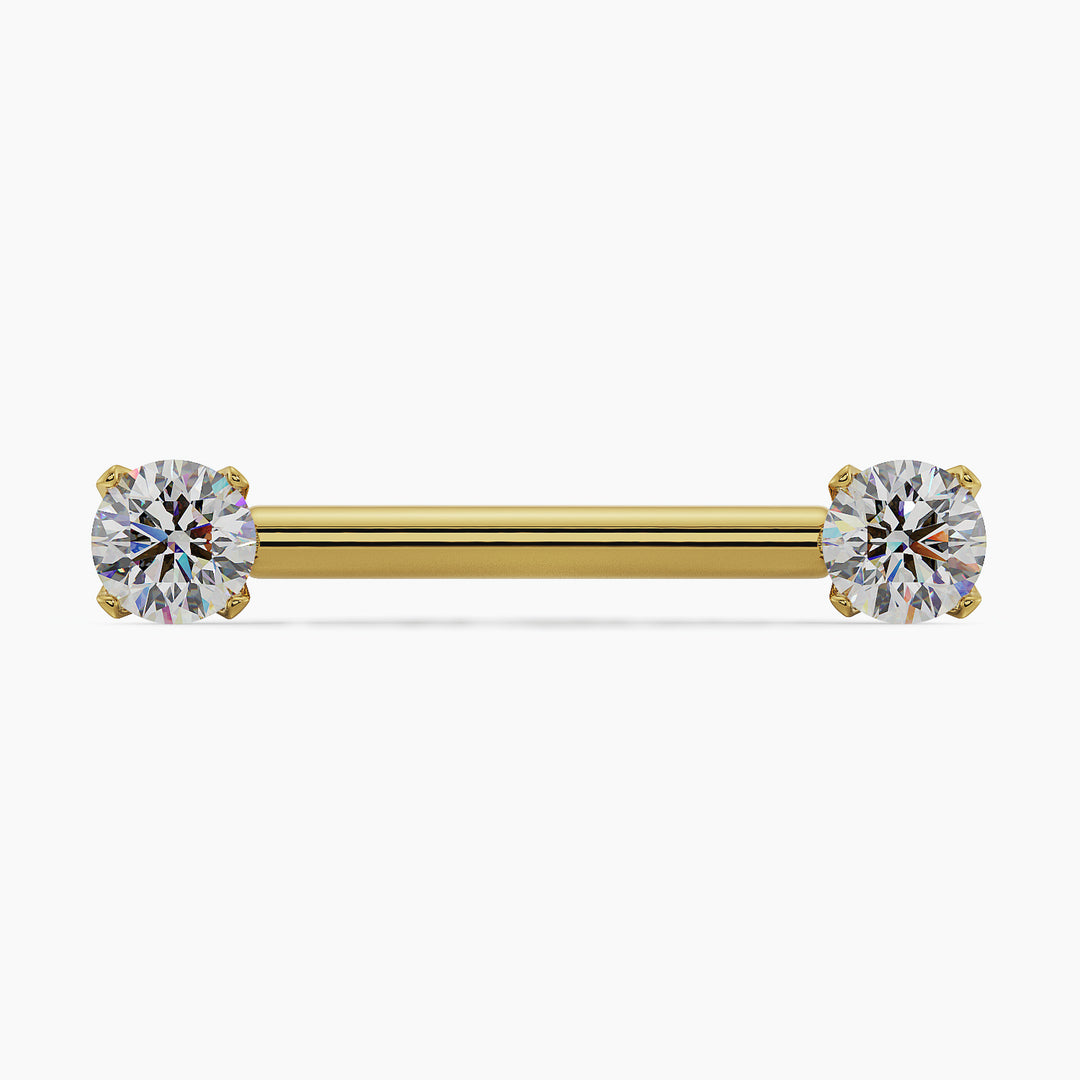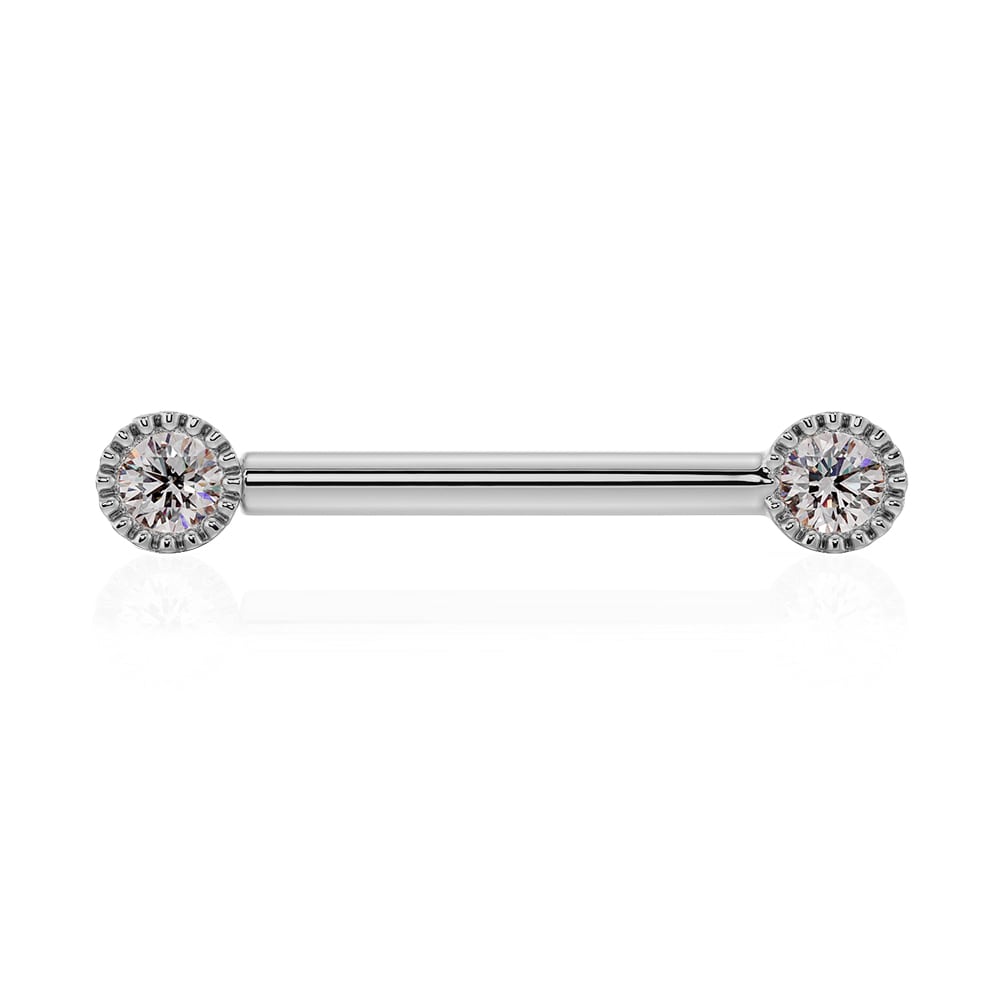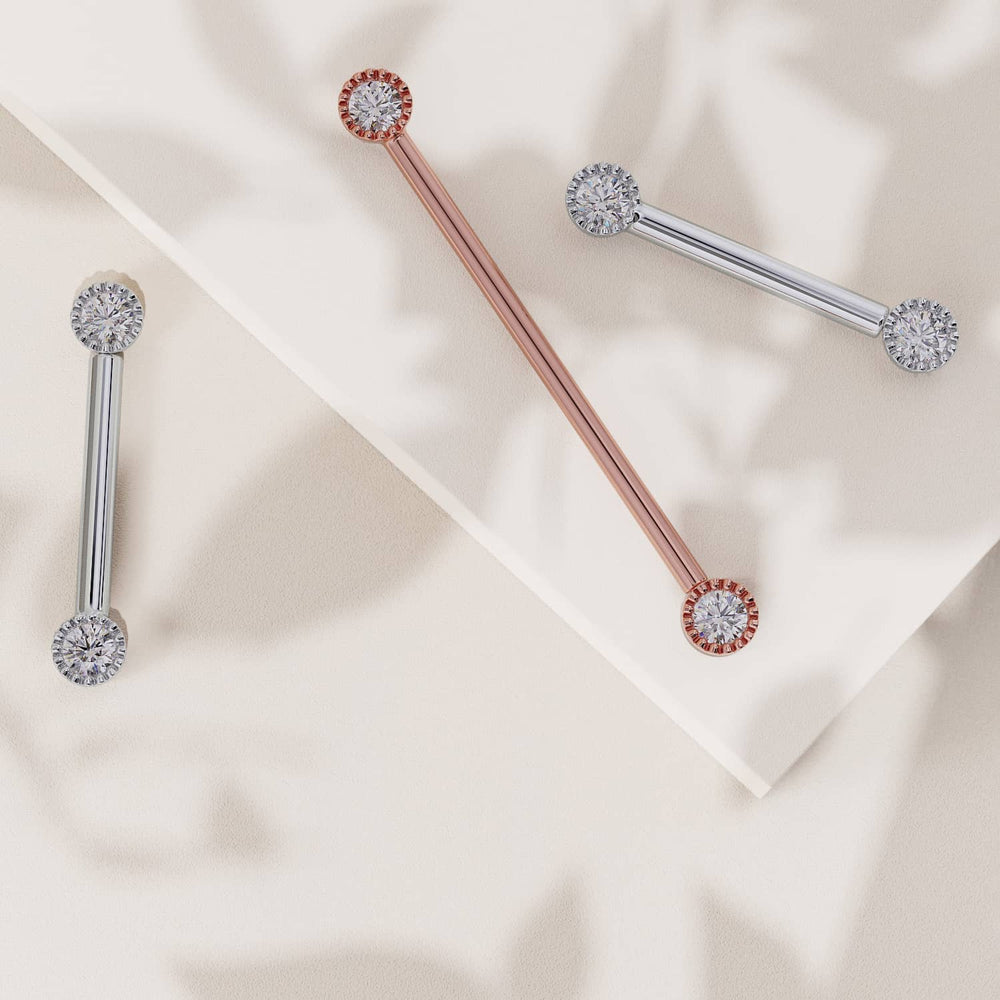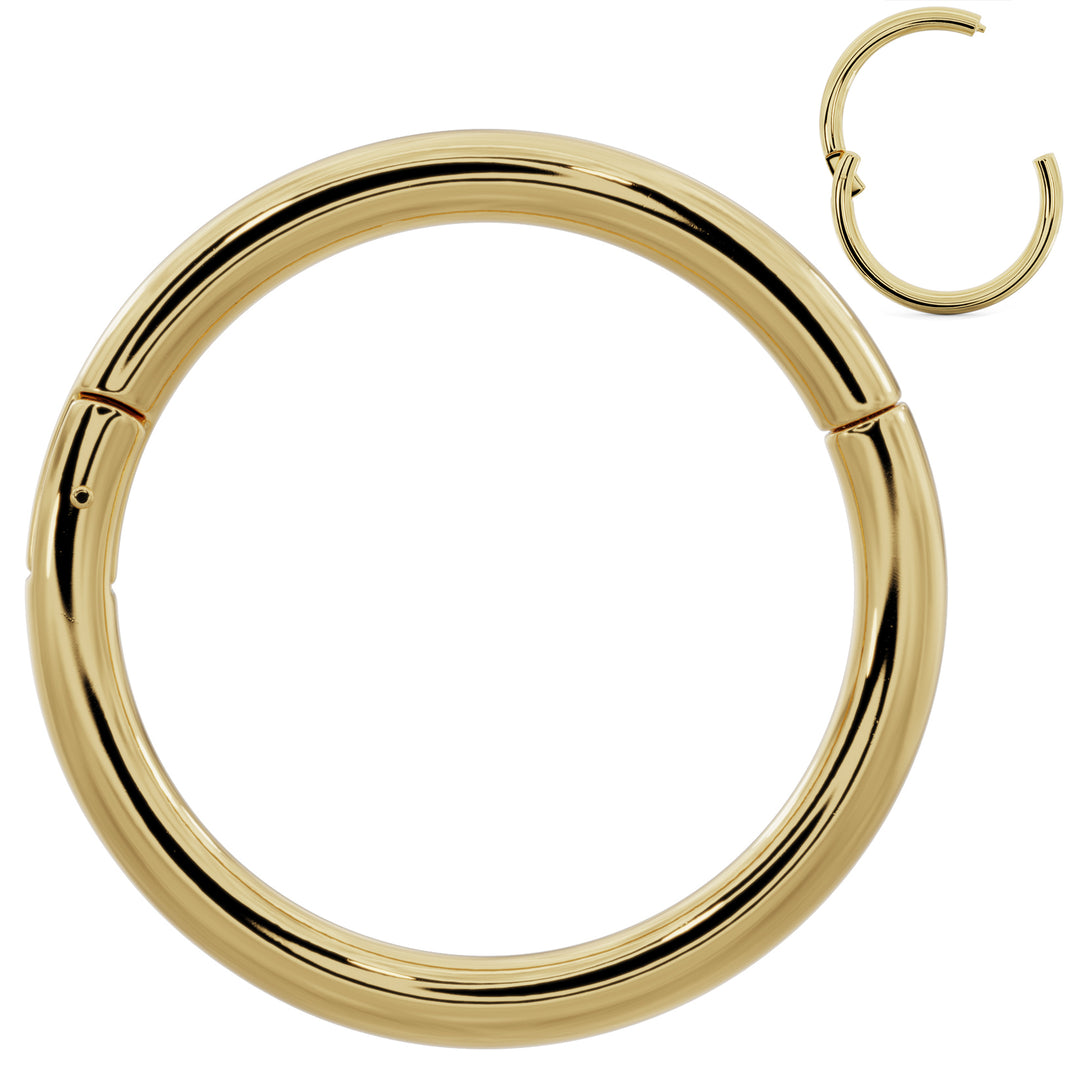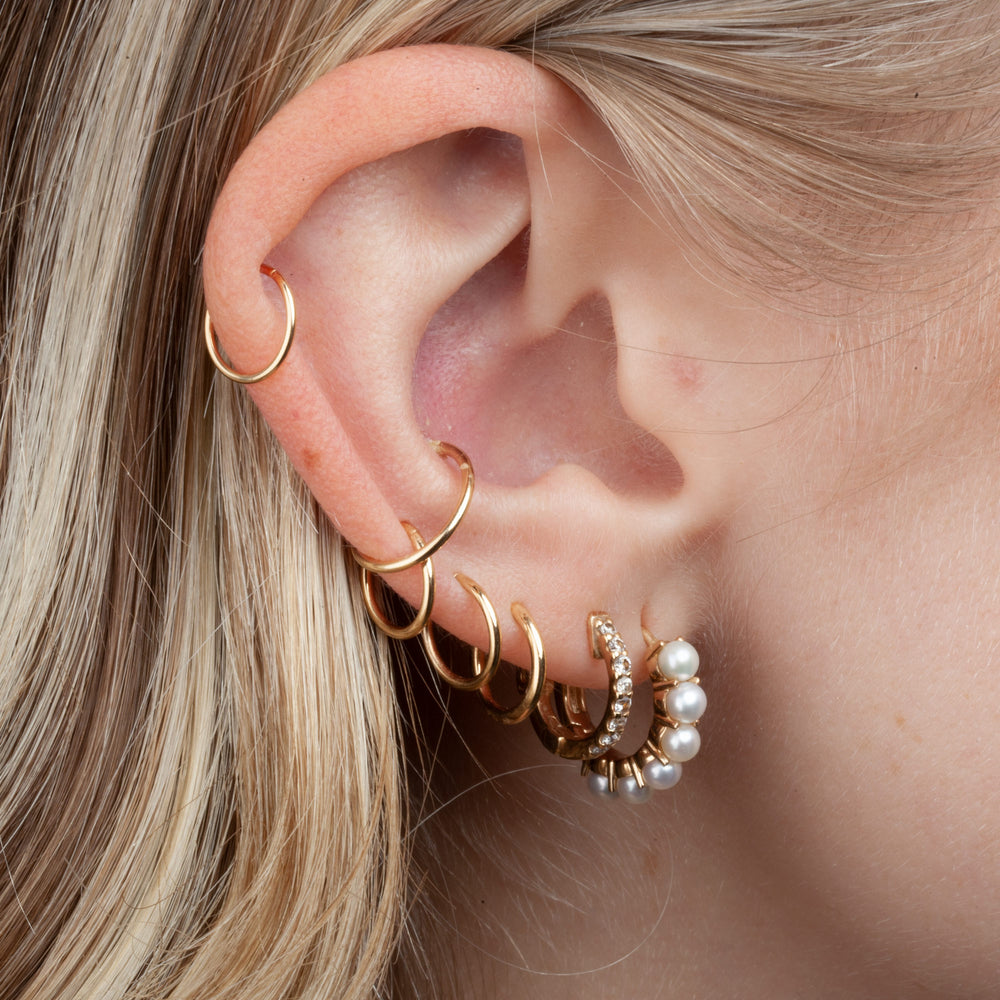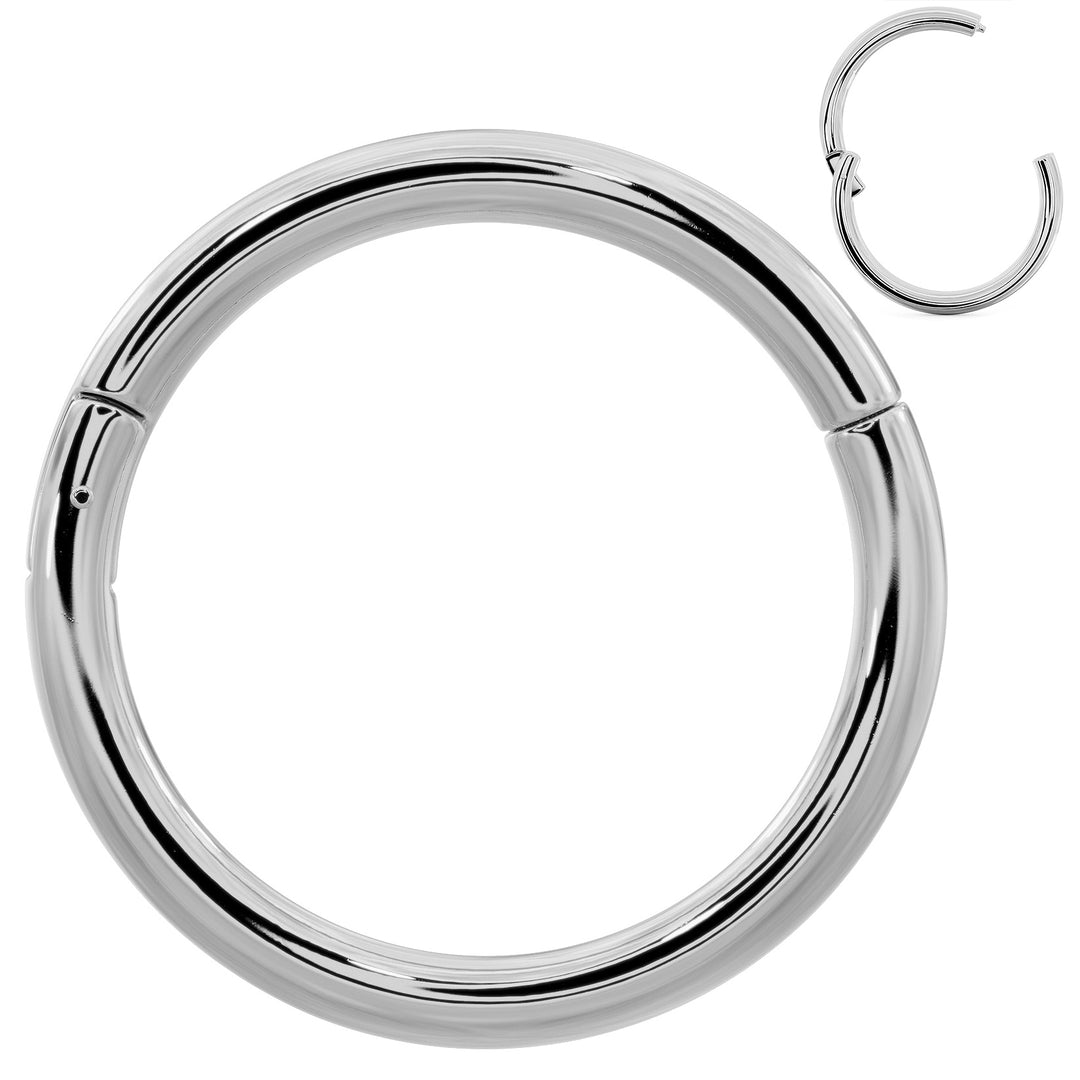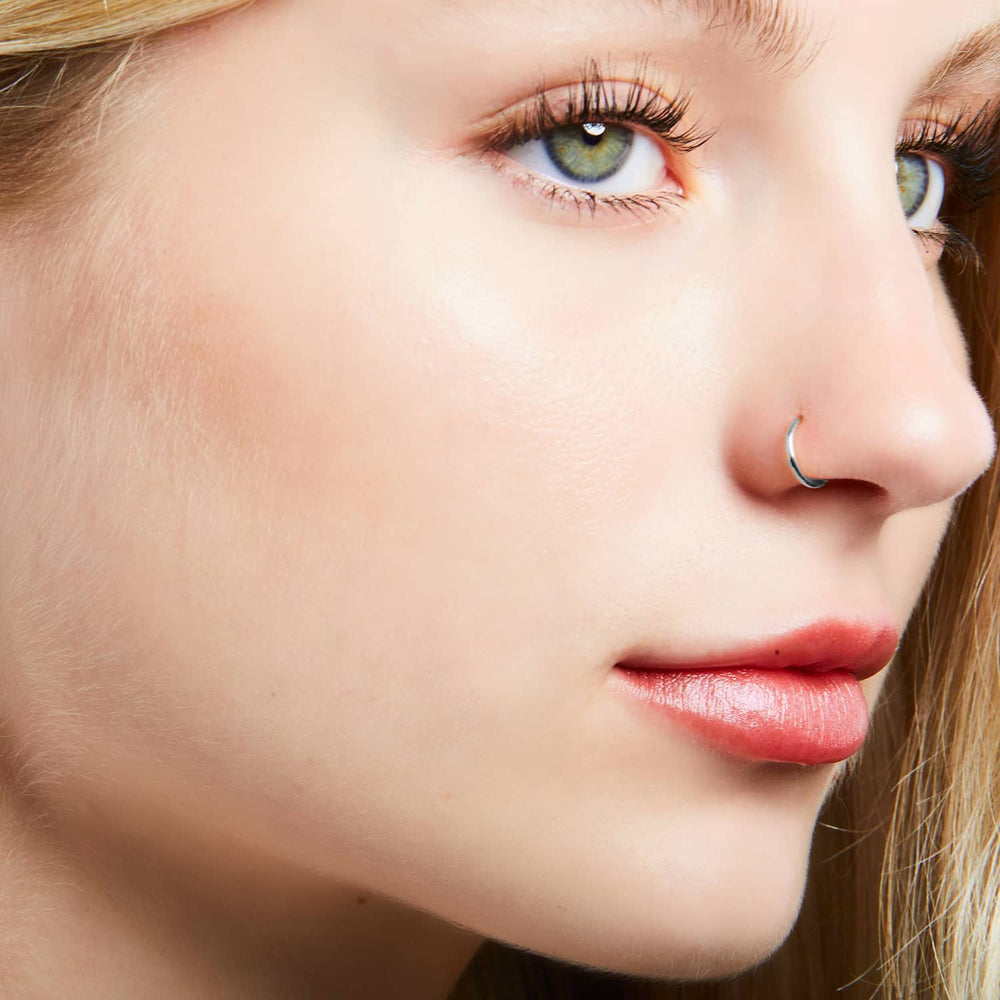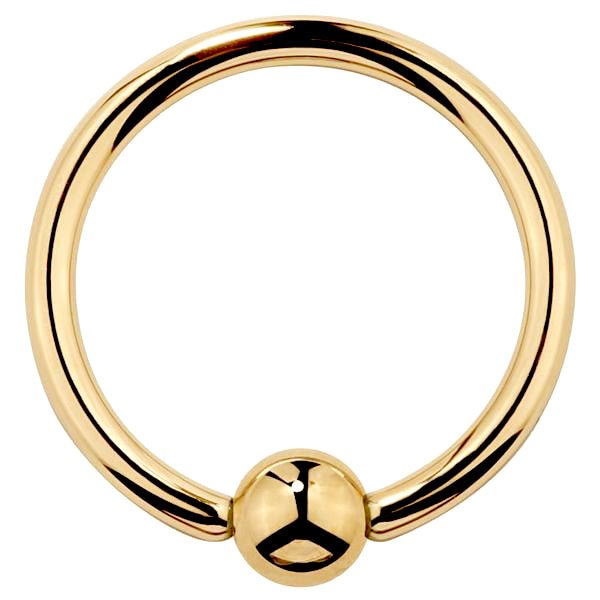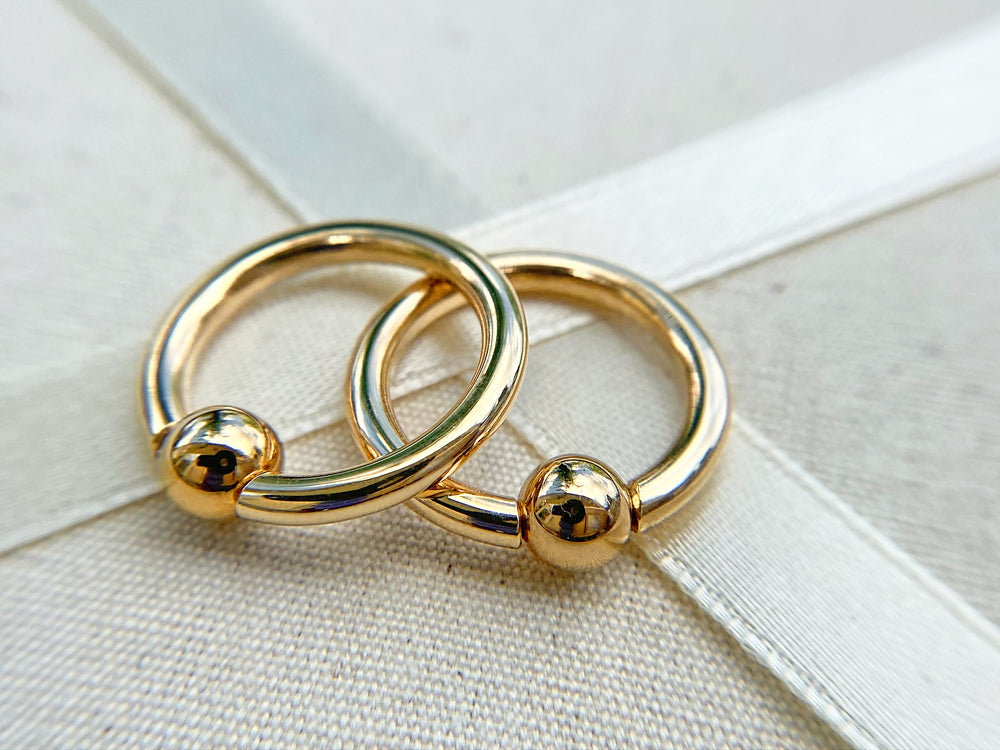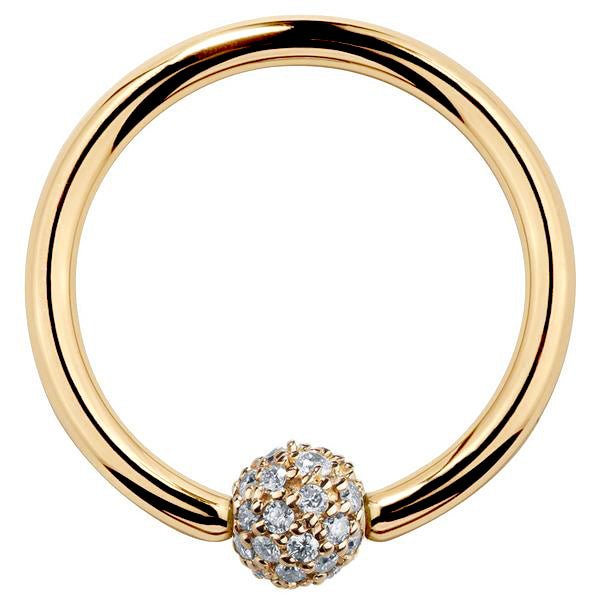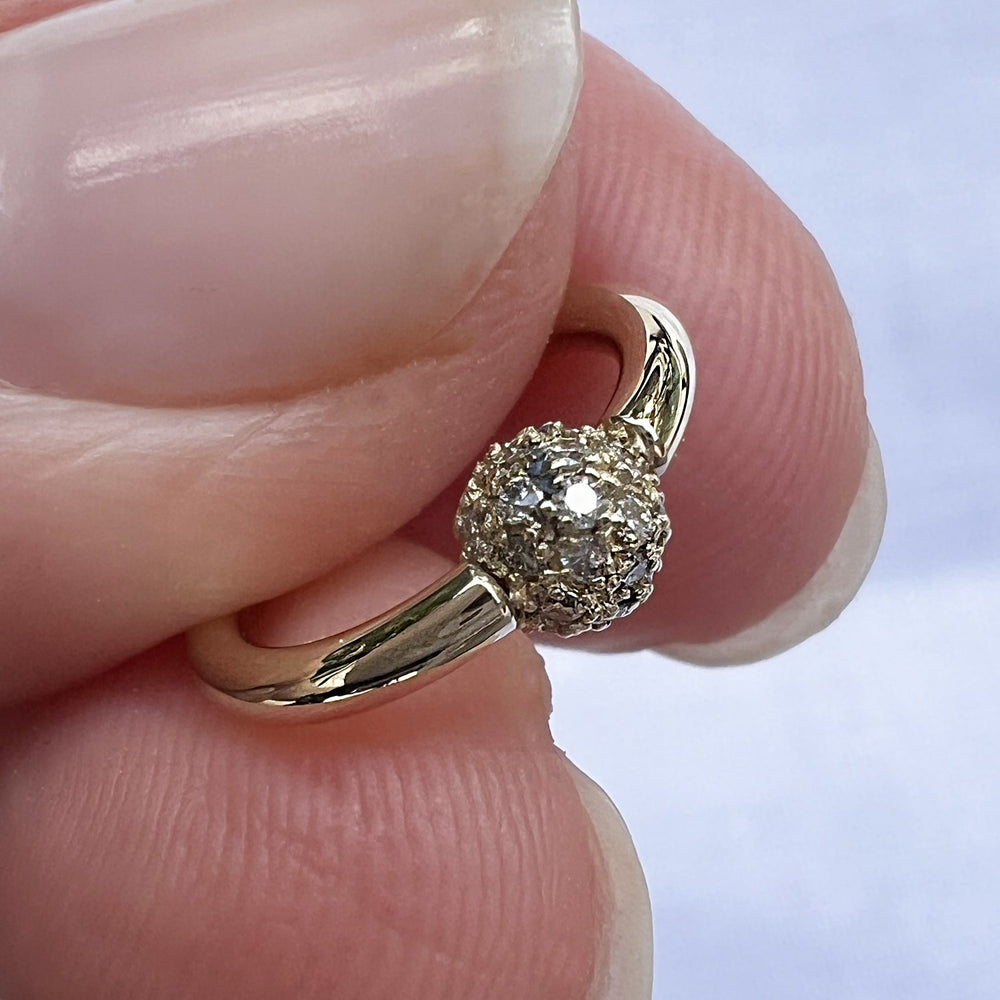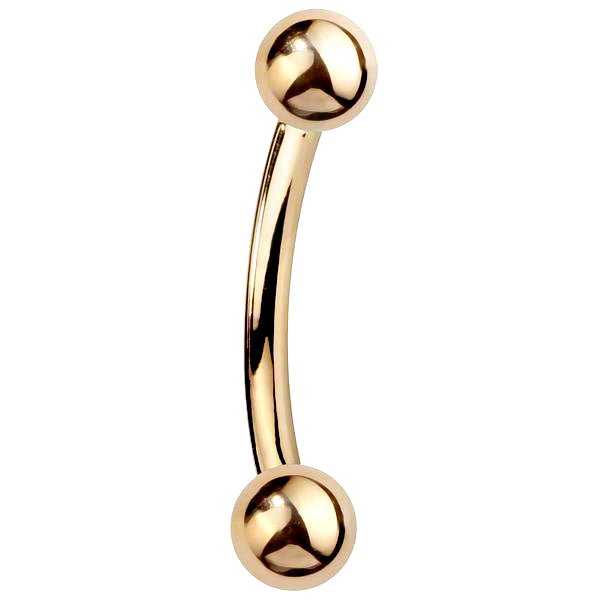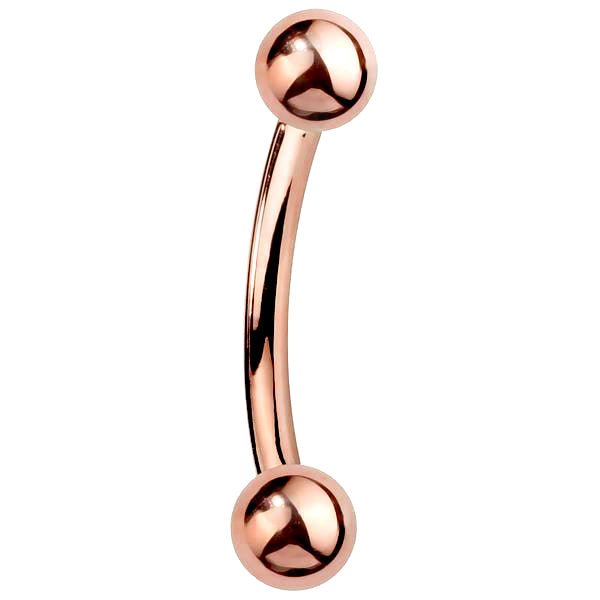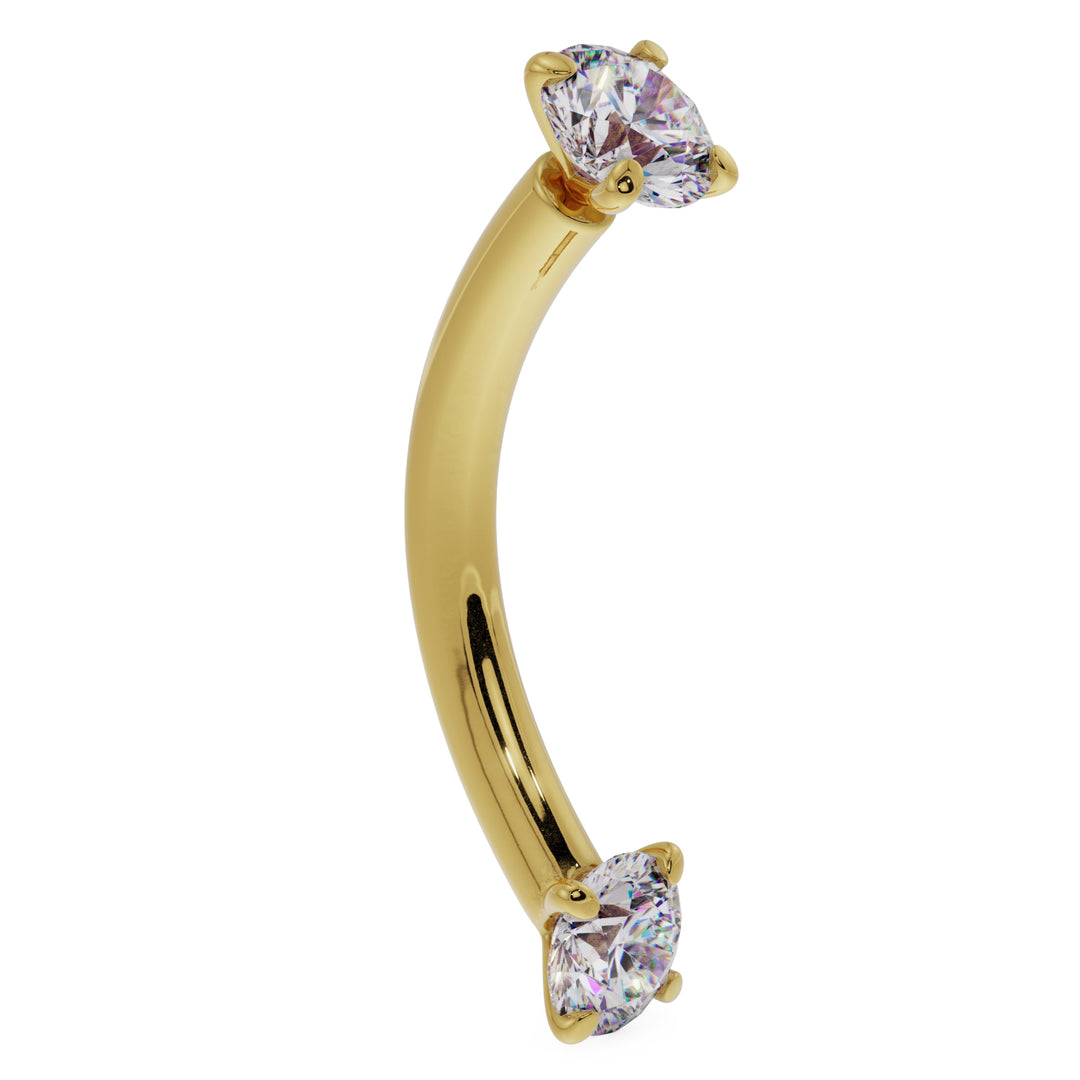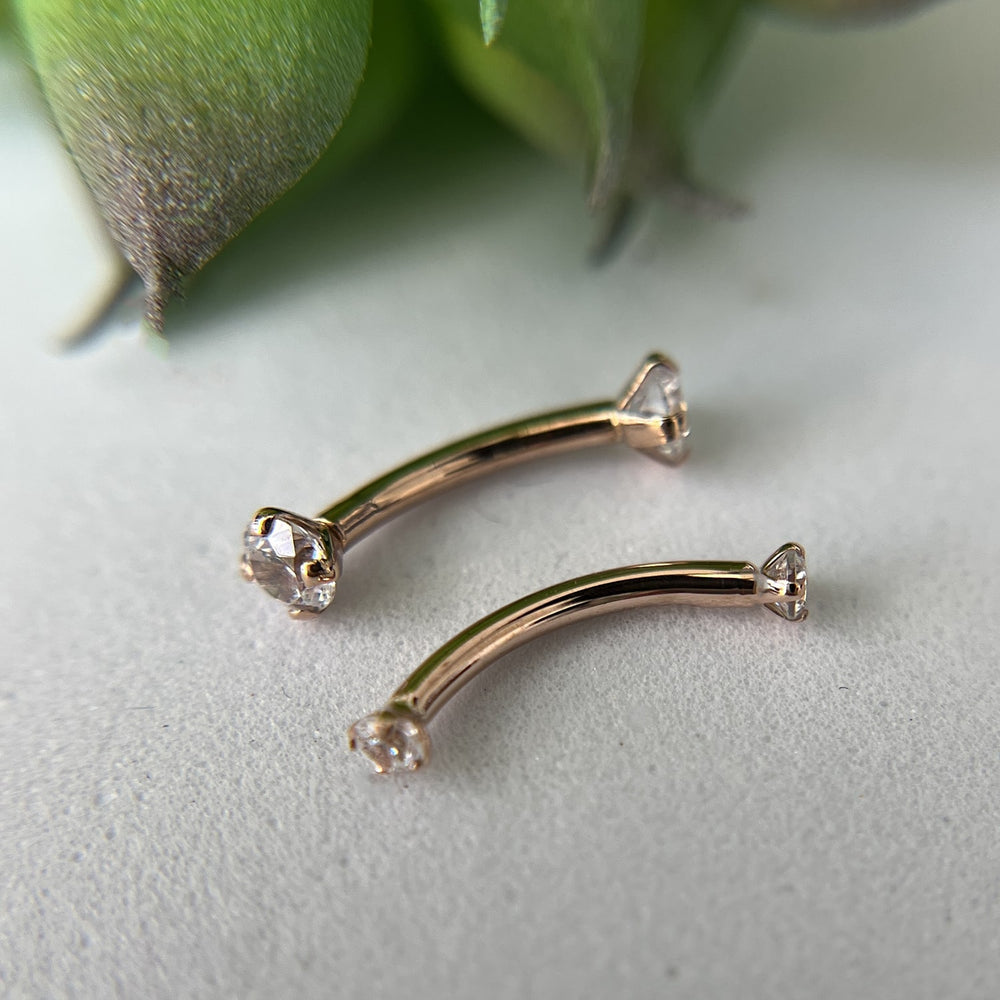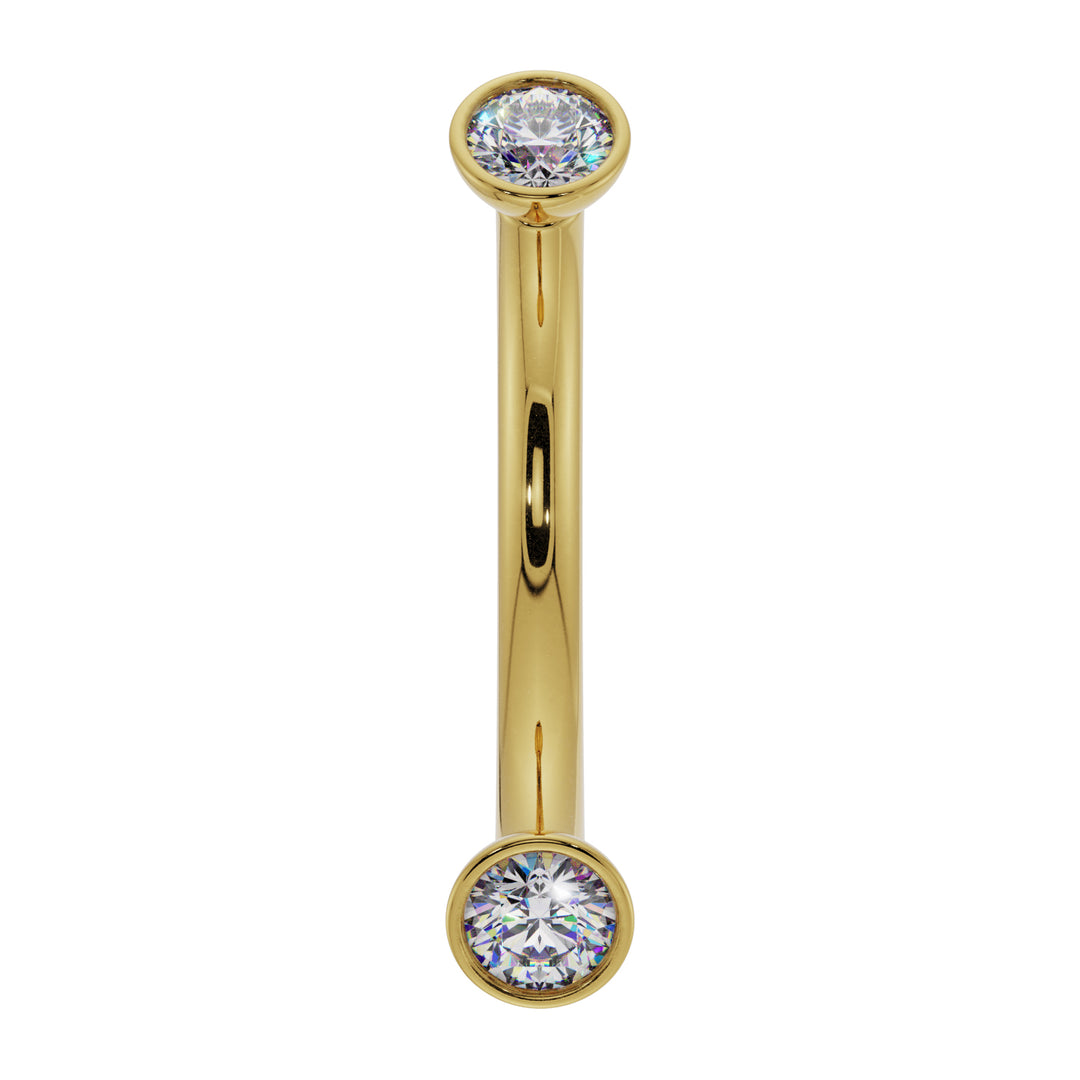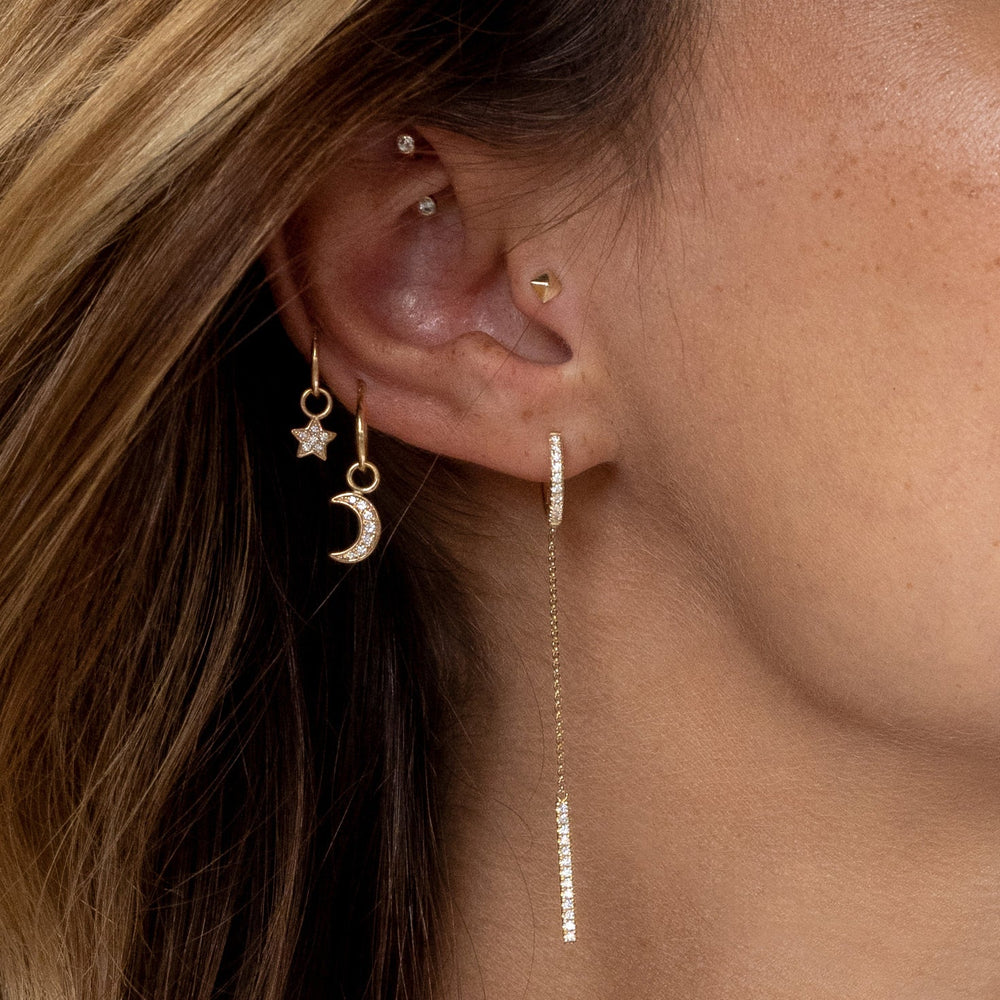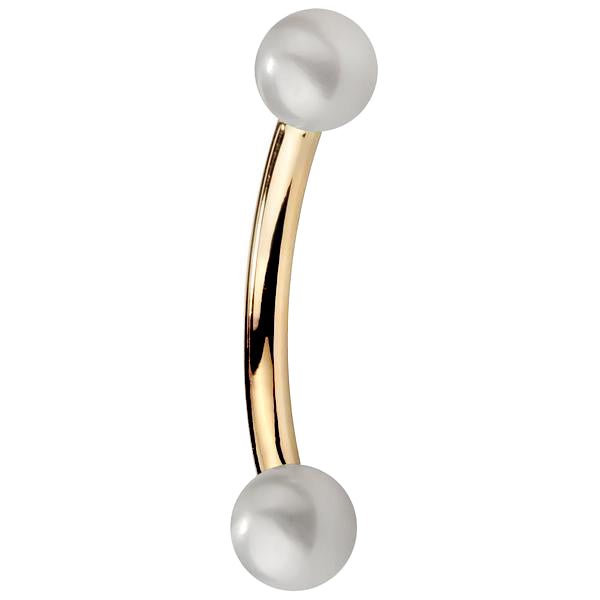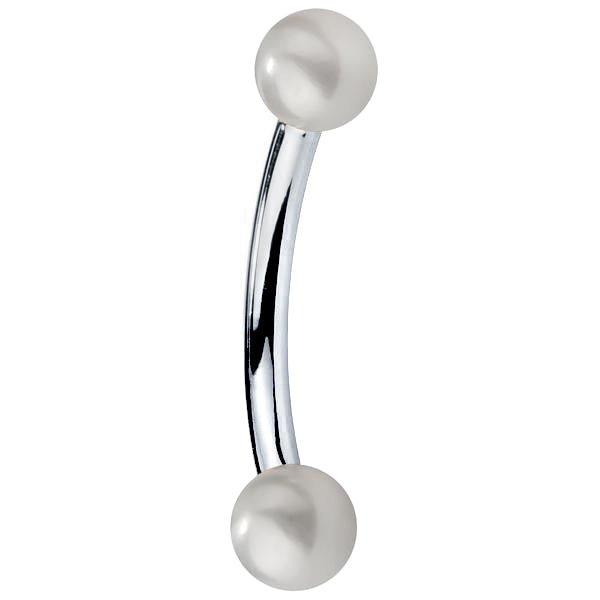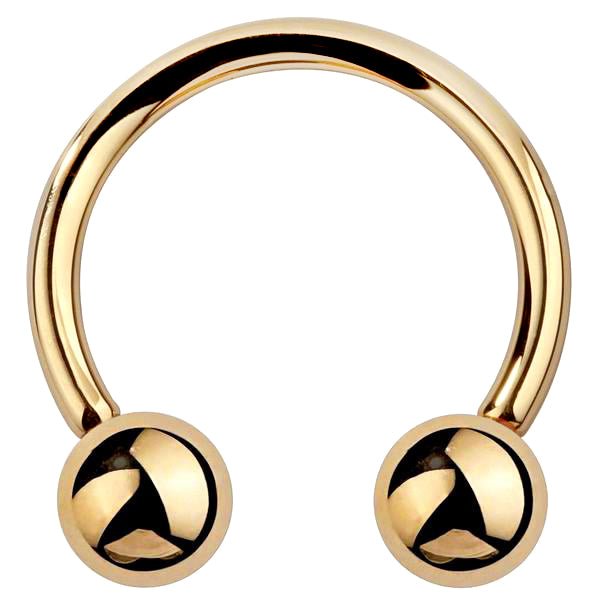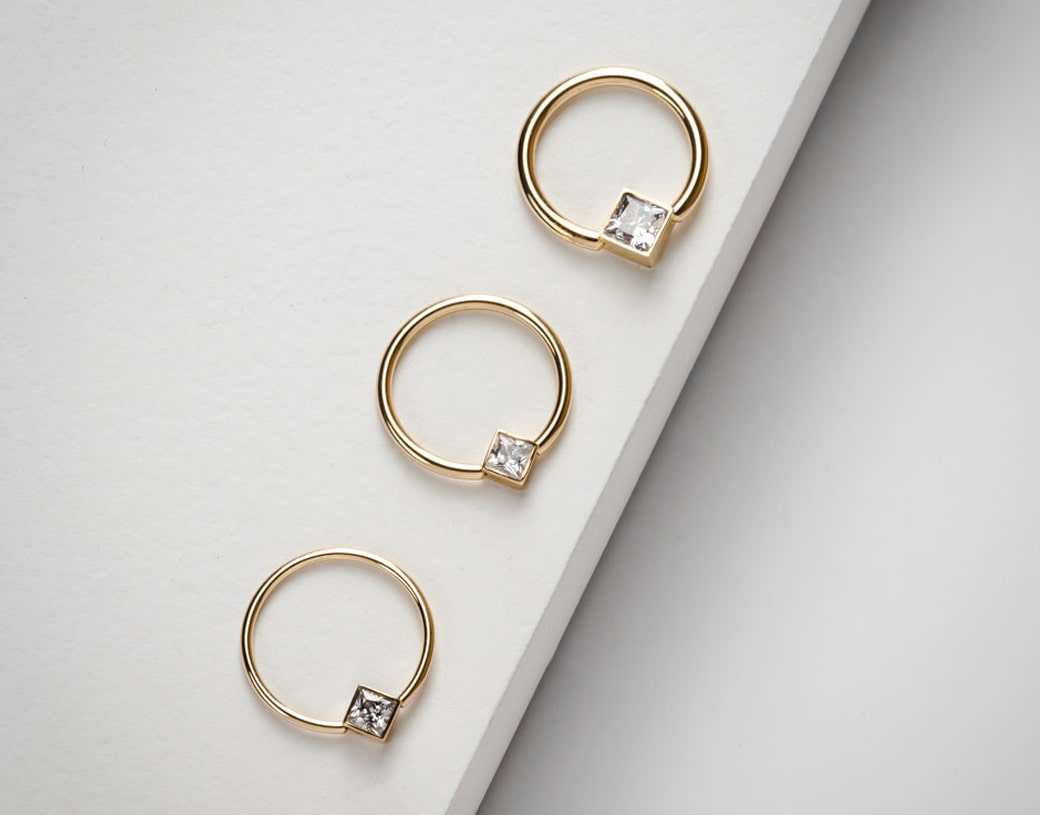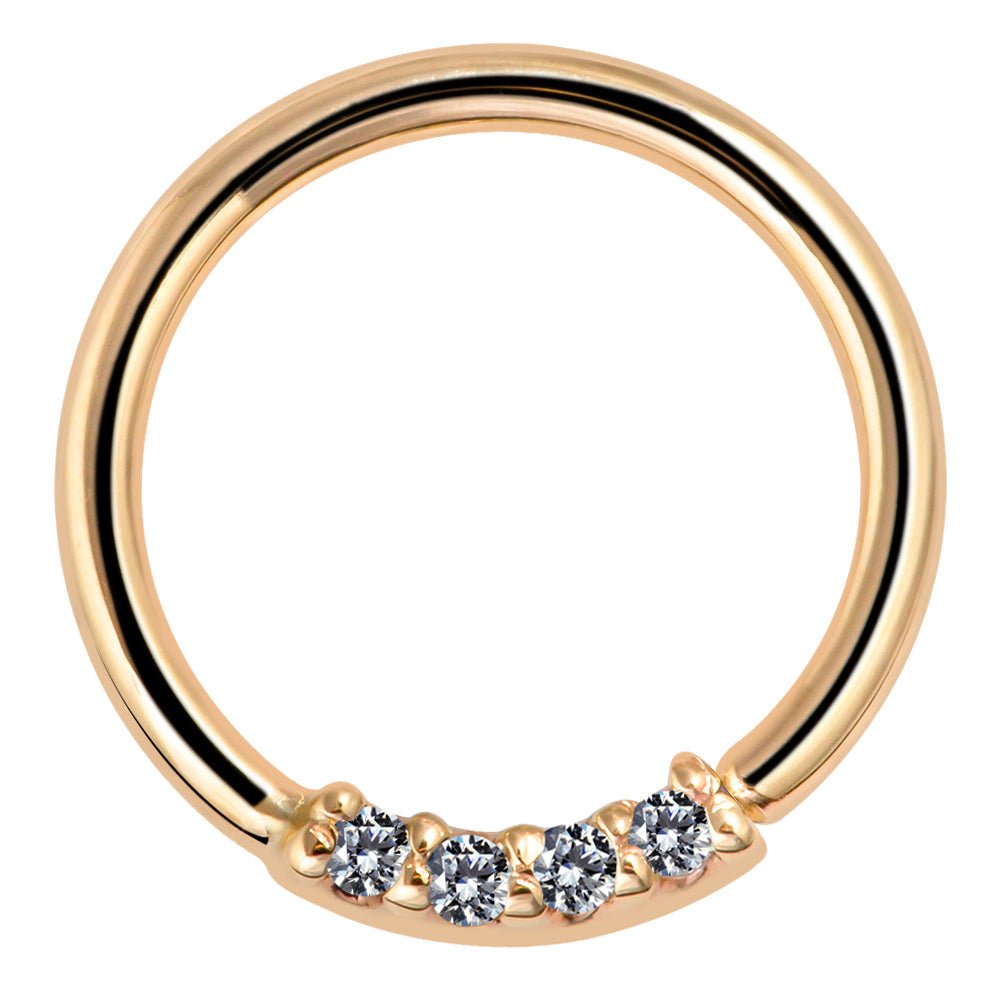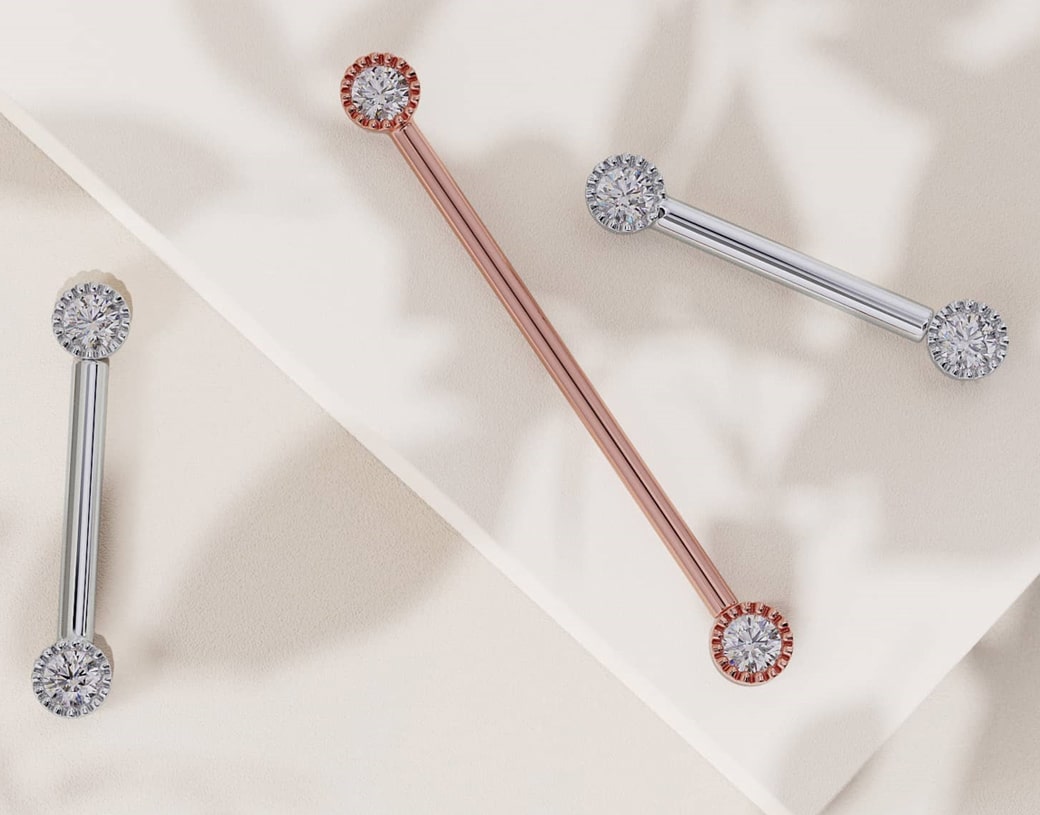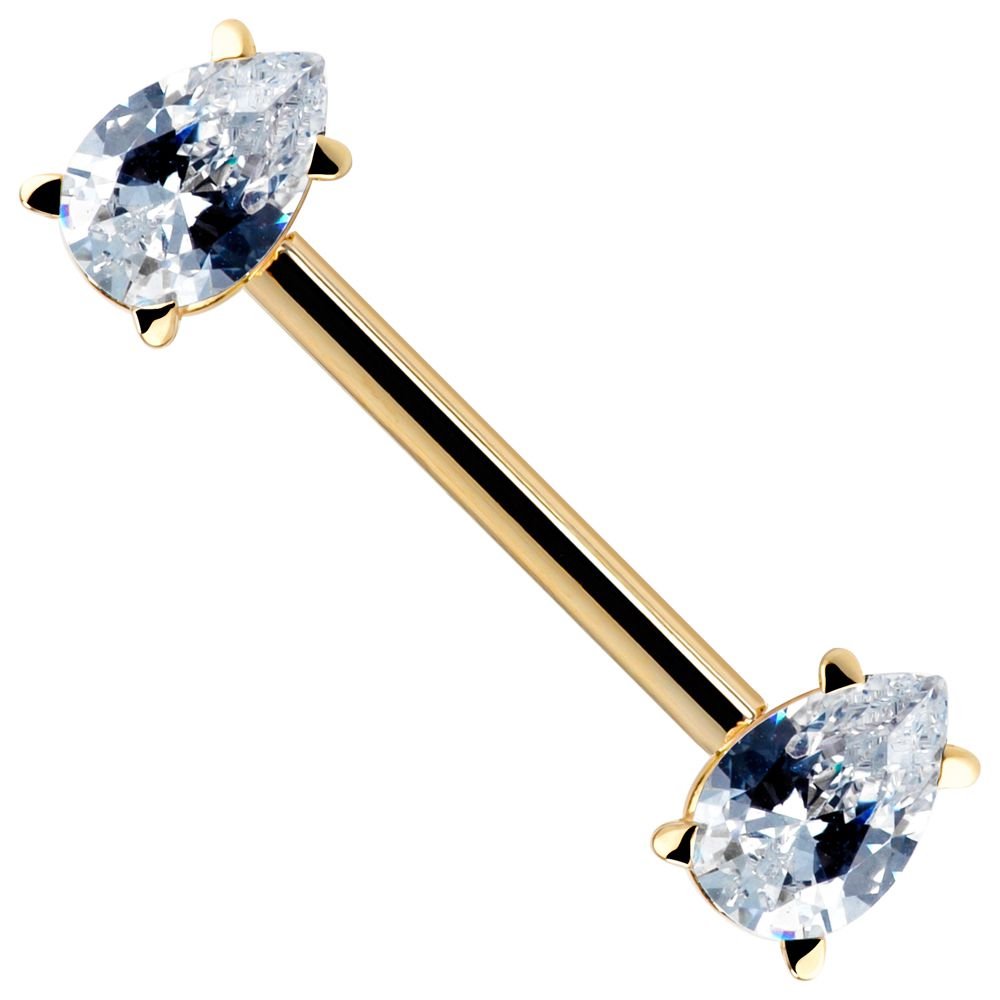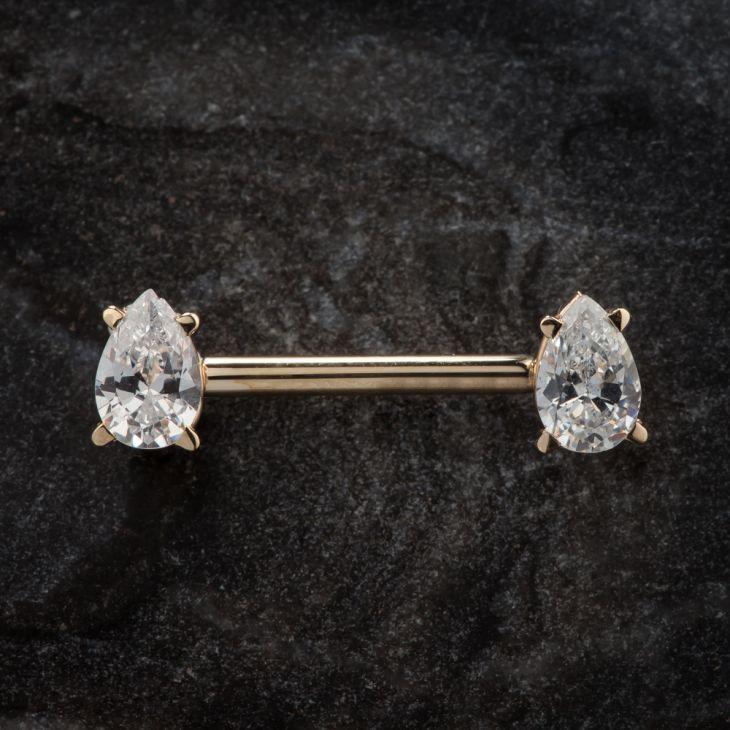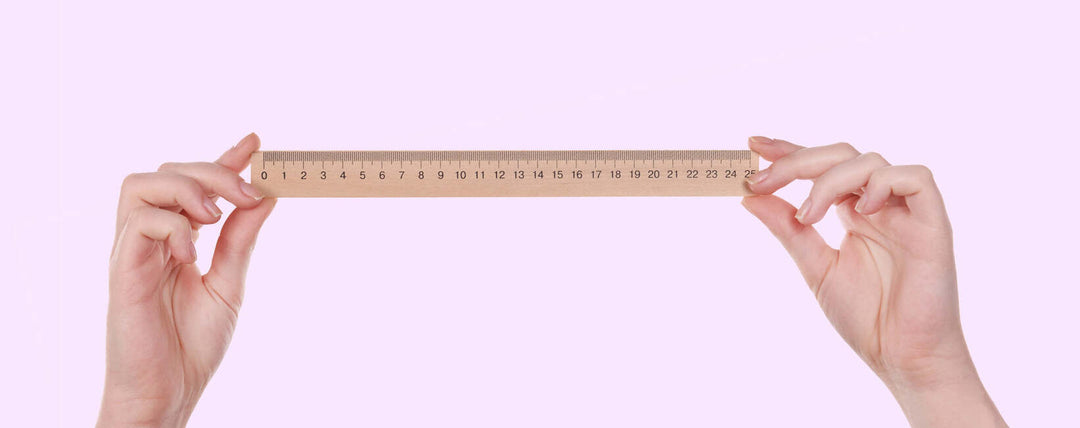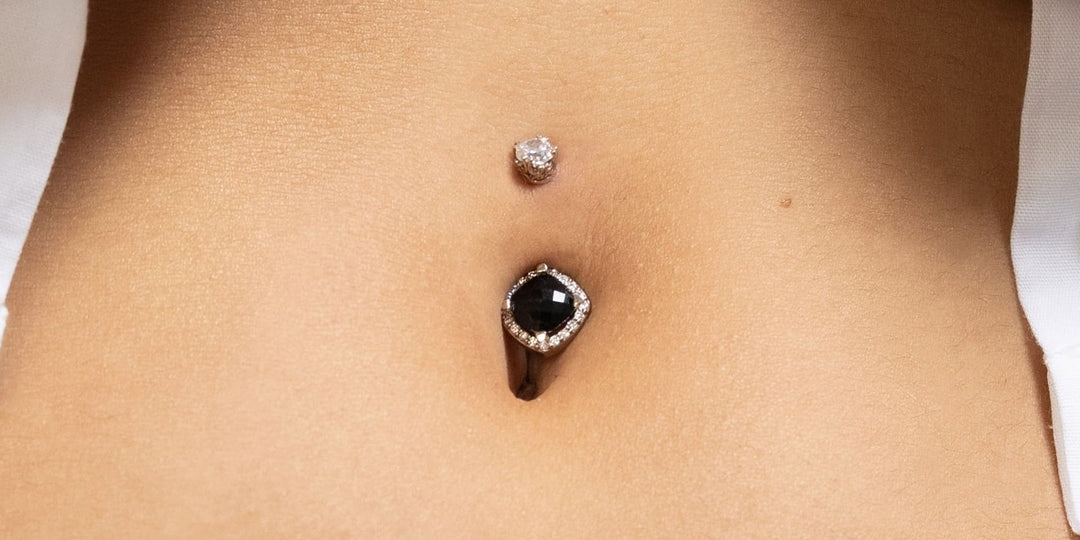The Nipple Piercing: Everything You Need To Know
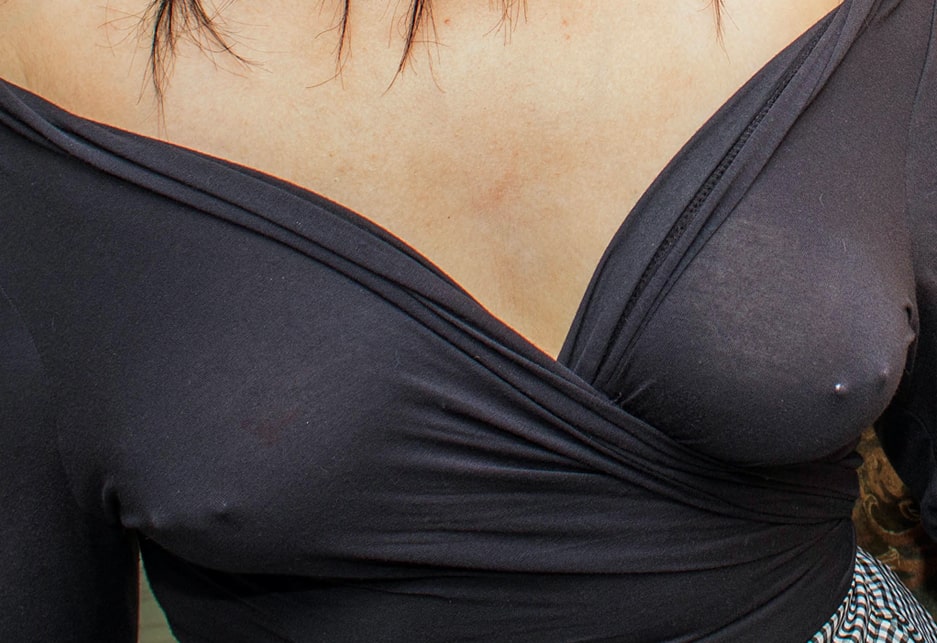

In recent years, nipple piercings have taken the piercing world by storm, exploding in popularity among both men and women.
When it comes to piercings in sensitive areas, there tends to be a sexual stigma surrounding them. While these stigmas aren’t entirely unfounded—many who get their nipples pierced claim that it increases nipple sensitivity, adding to the bedroom fun—it’s not the only reason that people love to get their nipples pierced.
Getting your nipples pierced is a very body positive act. Often, pierced nipples protrude more, ensuring that they won't go unnoticed in a tight t-shirt. Both men and women who get their nipples pierced for this reason wear their nipple piercing jewelry proudly in order to show that they aren’t afraid of their bodies.
Others who get their nipples pierced simply love the look. Your nipple rings don’t always have to be showing, and sometimes it’s fun to have a more exotic piercing that only you know that you have.
Whatever your reason for getting your nipple pierced, you’ll have to be prepared for a long aftercare journey. The nipple is not an easy piercing to heal, and you must take care of your piercing for the duration of its healing time, which could be up to a year. Before you get your nipples pierced, let’s talk about getting the nipple piercing, nipple piercing aftercare and healing times, nipple piercing jewelry, and nipple piercing complications.
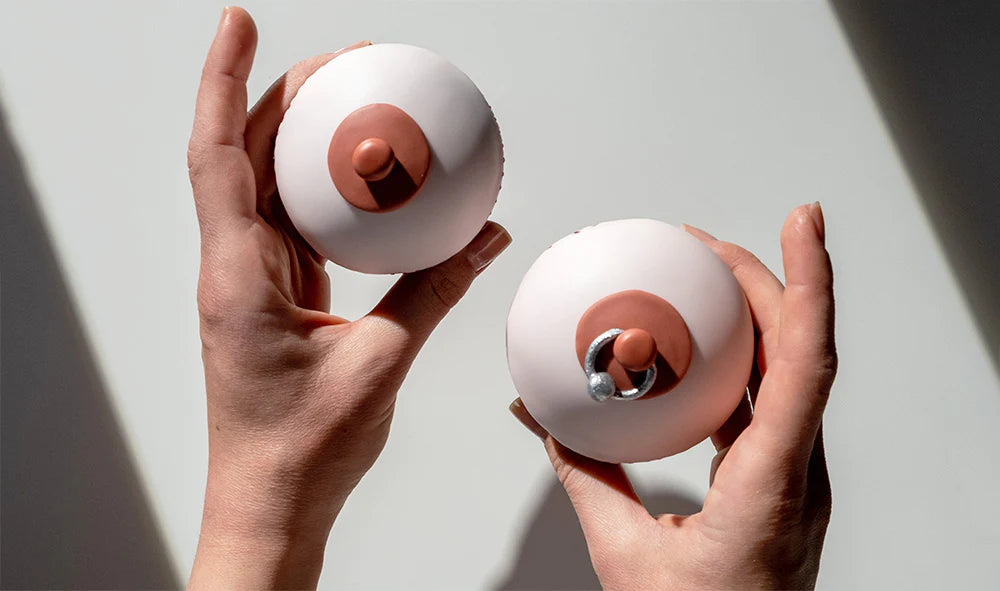

Here’s Everything You Need To Know About The Nipple Piercing:
Do Nipple Piercings Hurt?
It might not be too difficult to guess that this is going to be a painful piercing. Many report that it’s not as painful as they expected, but you’re going to feel some pain. The nipples are an incredibly sensitive area of the body. Sticking a needle through them will hurt.
The good news is that the pain will only last a couple of seconds as the needle pierces the skin. After the piercing, you can expect some discomfort and sensitivity for a couple of days afterward, but it shouldn’t be unbearable.
With the nipple piercing especially, you want to find a piercer that you trust and are comfortable with. Often, you must make an appointment to get your nipple pierced because they will reserve a private area for you. Remember, reputable piercers will do everything that they can to ensure that you’re comfortable, and if at any point during the appointment, you feel uncomfortable or nervous, let them know so that they can do whatever they can to make the process an easy one for you.
Nipple Piercings Healing
The nipple piercing can take up to 12 months to heal or even longer. It will appear healed on the outside before it has fully healed on the inside, so you should have a piercer confirm that it’s fully healed before stopping aftercare practices and changing the jewelry.
Because the nipple piercing takes a significant amount of time to heal, those who get their nipples pierced often prolong the healing period by stopping aftercare too soon. They believe that their nipple piercing has fully healed, they change their nipple piercing jewelry, and as they change their jewelry, they damage the still-healing skin in the interior of the piercing. This is when complications like nipple piercing bumps arise. Piercing bumps are often a result of trauma to the piercing site, and this often occurs when the nipple piercing jewelry is changed too quickly. To avoid this, wait to change your nipple piercing jewelry until a piercer has confirmed that it’s safe to do so.
Fun Facts
Nipple Piercing Aftercare
Nipple piercing aftercare doesn’t differ from the aftercare of any other piercing. Simply clean the piercing 2 - 3 times with a saline piercing aftercare spray or soak, per your piercer’s instructions.
Please note that saline solution (salt and water) should be the only product that you use on your healing nipple piercing. If your piercing aftercare spray contains additives (it’s become popular to add certain essential oils) or if you’re recommended tea tree oil, do not use either of these products. Healing skin is quite sensitive, especially the skin on your nipples, and these chemical additives can damage the skin and lead to things like nipple piercing bumps.
Here Are Some Other Ways To Care For Your Nipple Piercing So That You Can Avoid Piercing Complications And Enjoy A Healthy Piercing.
- No nipple play: This rule will be especially difficult if you got your piercing with the intention of spicing things up in the bedroom. Unfortunately, you must wait until the piercing has fully healed. Not only do hands and mouths contain harmful bacteria, but moving the jewelry can also cause trauma to the healing skin that could lead to nipple piercing bumps or rejection. Play it safe and leave the ladies alone until your piercer says you’re fully healed.
- Wear tight shirts or cotton bras during healing: Jewelry snagging can be a major issue with nipple piercings. Not only are jewelry snags painful, they can cause enough trauma to the skin to cause jewelry rejection, so a bad snare could mean the end of your piercing. Women can wear a cotton bra or sports bra to keep their jewelry safe, and men or women who prefer to go braless should wear a tight t-shirt beneath their clothing for the same result.
- Choose the right starter jewelry: Fleshier areas, like the nipples, are more susceptible to jewelry rejection. Much of jewelry rejection can be avoided by choosing the right starter jewelry. You should choose high quality metals, like 14k gold or titanium, for jewelry. Anything with cheaper alloys can cause skin irritation. Additionally, you want to choose jewelry that’s lightweight and won’t tug at the piercing holes while remaining large enough to accommodate swelling during healing.
- You’ll see some excretion. Don’t be too alarmed: Every piercing excretes some fluid during healing, but the nipple tends to be a little more oozy. If the excretion is clear or creamy white, you shouldn’t have anything to worry about. If it starts to turn bright white, yellow, or green, it could be a sign of infection. Always play it safe; when it doubt, talk to a professional.
- Don’t be alarmed if your nipple piercing is bleeding the first few days after piercing: This is a fairly common side effect due to the sensitivity of the skin in this area. Simply be aware and don’t wear bras and shirts that you care about staining. If your nipple piercing is bleeding weeks or months after the initial piercing, talk to your piercer because it may be a sign of an issue.
- Don’t pick at a nipple piercing crust: Nipple piercings tend to see a lot of discharge which will dry and form a crust on the nipple. It can cause the nipple piercing to itch, besides being unsightly. Don’t pick at or scratch a crusty nipple piercing. Instead, you can gently soak the crusties with saline solution until they become soft, then gently wipe them away with a clean paper towel, taking care not to hurt the piercing.
- Let’s talk about keloids on your nipple piercing: Keloids are something that’s often misdiagnosed in the piercing world. Even experienced piercers mistakenly call standard piercing bumps keloids. This is incorrect, and it can be dangerous information to spread. Keloids are actually a rare and serious condition that affects only around 10% of the population. They appear due to any skin injury, and they are large, misshapen bumps that can only be removed using surgery. If you have never had keloids before, and they don’t run in your family, then your nipple piercing bumps are not keloids.
FreshTrends Tips
Do I Have A Nipple Piercing Infection?
You’ll be happy to know that the answer to this question is almost always “no.” Piercing infections in any piercing, including the nipple piercing, are quite rare. As long as you’re practicing hygiene and cleaning your nipple piercing every day with saline solution, it’s unlikely that you’ll develop an infection.
Often people mistake standard piercing discharge for a nipple piercing infection. The nipple sees more discharge than other piercing types, so don’t be alarmed if you see clear or whitish discharge coming from your piercing, even months after you’ve been pierced. This is perfectly normal.
Signs of a piercing infection include green or yellow discharge, bleeding and discomfort months after getting pierced, developing a fever or feeling heat around the piercing site, and other more intense symptoms. If you have a piercing infection, there will be no doubt, and you’ll know that something is wrong.
Nipple Piercing Jewelry
Once you’re successfully healed, the fun can begin.
It might not seem like it, but the nipple provides the perfect location for a wide variety of nipple piercing jewelry styles.
The Straight Barbell
The straight barbell is one of the more common choices. Stay simple with a solid 14k gold barbell, or choose one with opal or pearl ends or different charms.
Straight Barbells
View allHoops
All sorts of hoops go well in a nipple piercing. Captive bead rings are wildly popular since the bead makes it easy to change and offers flair beyond the standard hoop. Clickers are also popular for their ease of use and intricate designs.
Hoop Nipple Rings
View allThe Curved Barbells
Offering a similar aesthetic as the straight barbell, the curved barbell won’t stick as far out to the sides as a straight barbell. This is a great piece to have when you want your nipple piercings to stay subtle.
Curved Barbells
View allMore Options
Nipple shields are where things get super fun. Whether you’re getting crazy in the bedroom or you really want your nipple piercings to pop, these provide an intricate and beautiful addition to any nipple piercing.
Nipple Piercing Collections
Why Shouldn’t I Get A Nipple Piercing?
The long healing time makes the nipple piercing one that you really want to think about before getting. You’ll want to consider your plans for the next year and whether the piercing will affect them.
If you’re already pregnant or planning to get pregnant within the next year, then you want to wait on your nipple piercing. You’ll have no problem breastfeeding with healed nipple piercings, but you can’t breastfeed with nipple piercings that are in the midst of the healing process; the milk can get stuck in the piercing holes and cause infection, not to mention the fact that you shouldn’t breastfeed with jewelry in your nipple.
Women should wait until they’re between menstrual cycles before getting their nipples pierced. It’s a painful piercing already without the added discomfort of sensitive breasts.
If you’re planning a beach vacation in the next year, think about waiting. While the piercing is healing, you won’t be able to swim, and you’ll need to stay away from sandy areas, lest sand gets in your healing piercing. Although your new nipple piercing won’t keep you from your vacation, it could put a cramp on your plans.
Nipple Piercing Cost
The nipple piercing will cost somewhere around $20 - $50, not including the jewelry. Since it’s such an intimate procedure, you want to vet your piercer carefully. Make sure that they’re someone that you can be comfortable with who will approach the procedure professionally and kindly.
Don’t skimp on the jewelry. Make sure that you buy high quality starter pieces so that your body doesn’t reject them. If price is an issue, you can always get one piercing at a time.
